History of the Breed
It was in 1922 that an obscure veterinarian by the name of Francis Richard Barnes
was successful in gaining recognition of the Rhodesian Ridgeback as a breed. Let's
follow the words of Mr. B.W. Durham, witness of those days, as he recounted the affair
certain years later in an article for the South African Kennel Union Gaz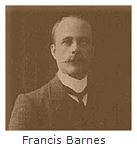 ette (Dec.
1950):
ette (Dec.
1950):
“The chief, if not the sole, credit of getting the breed standardized and recognized
by the S. A. Kennel Union, is due to Mr. F. R. Barnes of Figtree -
The response must have been gratifying to the convener. A large number of owners
attended and well over 20 dogs were paraded. I attended by invitation. These dogs
were of all types and size, from what would be regarded as an undersized Great Dane
to a small Bull Terrier; all colors were represented -
B.W. Burnam, the author of the expose, was stated to have "some knowledge of the breed", which might be expected, seeing as he was the only all breed judge in South Africa in in that period. The expression "a spectator with some knowledge of the breed..." was referring to none other than the author himself, B.W. Burnam who was the sole all breed judge in the whole of South Africa during that time. Beyond Barnes, Durham and Mr. C. H. Edmonds took part in the drawing up of the standard, the latter a senior Vet Surgeon for Southern Rhodesia at the time.
Rhodesia is introduced to crested dogs
But let's go 50 years back, to rev. Charles Helm who lived in Matabeleland at the end of last century, the southern region of today's Zimbabwe, Rhodesia until about 1980. Helm ran the mission of Hope Fountain, not far from the kraal of the matabele king Lobengula, where years later the city of Bulawayo was to be founded. During the later part of the 1800s he introduced two ridged dogs to the area, "Lorna" and "Powder" that he had acquired from the Swellendam district. The mission was located at a crossroad and was a stopping place for the many travelers crossing the region, among whom were a number of "white hunters" that were after big African preys, elephants and lions.
The great Hunter, Cornelius Van Rooyen 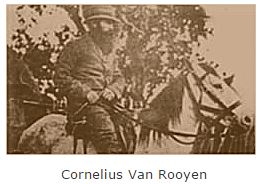
The many visitors received by Rev Helm included men of renowned hunting abilities,
such as Cornelius Van Rooyen, resident of Mangwe which lie about 85-
We are often given the impression by the movies that the "White Hunters" were middle aged men, seasoned with experience and wisdom. The contrast is striking once we know that "Nellis" Van Rooyen, 19, was married to "Maria", who herself was barely 14 yrs, the wedding being ministered by the Rev Helm.
In 1910 Mr Graham Stacey of Figtree who had acquired ridged dogs from Van Rooyen,
negotiated an agreement to place a ridged dog in the care of Mr Francis Barnes of
nearby Bulwayo. This completes the lineage of ridged dogs by way of Helm, Van Rooyen
and Stacey, finally ending up with Francis Barnes. Hence the Rhodesian Ridgeback
is the result of the efforts of hunters, breeders and dedicated individuals who managed
to cross dogs and get the best out of some European varieties. Notably, the Irish
terrier, grand Danes, pointer, greyhounds and the bulldog-
From whence does the "ridge" derive?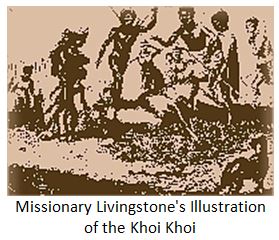
The Hottentot dog.
Almost certainly the ridge derives from a dog of the Hottentots -
The foundation of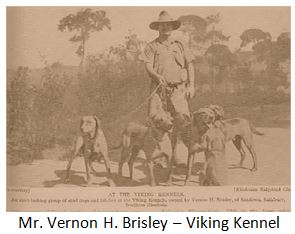 the Rhodesian Ridgeback Club (of Rhodesia) -
the Rhodesian Ridgeback Club (of Rhodesia) -
Bulwayo was the location of the final formulation of the Rhodesian Ridgeback club
-
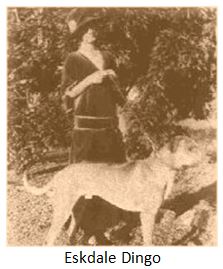
Early stages of the breed
Six were registered by Francis Barnes on March 16th, 1926 , Included in the registration were Lion, Como, and Eskdale Dingo. Barnes settled on the name for both his kennel and his farm, calling them "Eskdale". The foundation of the breed was laid in these years, and the characteristics and the qualities of the breed we admire today in the Rhodesian Ridgeback come to us from those first breeders.
Pedigrees will contain some of these kennels from the early years
• Avondale of Mr. T. Kedie-
• Drumbuck of Mrs. L. M. Dickson who was among the founders of the club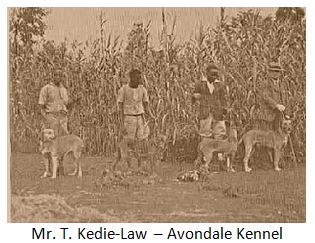
• Eskdale of Mr. Barnes
• Khami of Mr. G. Stacey
• Kumalo of Miss M.J.S. Vigne
• Munemi of Captain B.L. Miles, who collaborated with the Club for many years
• Revelston of Mr. D. R. Keith from Swaziland
• Rhodian of Mr. A. J. Walker, famous for his hunting pack
• Sandvelt of Captain R. R. Dendy-
• Sipolilo of Arthur "Tractor" Smith, great hunter
• Umvukwe of Miss Ainslie
• Viking of Mr. Vernon H. Brisley, probably the greatest among the breeders of the time and the one who influenced the most the breed in those years.
The breed begins to spread across Africa
The 1930's and 1940's saw a proliferation of the breed across much of South Africa. Life was easy during this period under the British Crown: there are no borders, there is a widespread enthusiasm, the perception of being privileged citizens and a general welfare in which the white population participates. The rumors and news of war on African soil was really not a concern of the south African people. The growth and establishment of the breed found a fertile environment during these years. It was during this period that breeders of renown having experience and passion for the breed became involved.
Among the most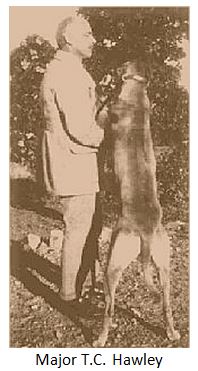 instrumental kennels were:
instrumental kennels were:
• Drumbuck of Mrs. A.M. Smithwick
• Leo Kop of Miss Mabel Wellings, one of the most imperative of the time which much contributed to today's lineage
• Lions Den of Mrs. D. E. Strickland who worked for numerous years in the committee of the RR Club of Rhodesia, till she traveled back to England in 1950
• De Holi of Major T. C. Hawley. He was a legendary breeder and additionally a historian of the breed with his book "The Rhodesian Ridgeback"
• Gazeley of J. B. Bocock, who started breeding in 1947
• Inkabusi of Mrs. I. Kingcome fom Salisbury in Rhodesia, her husband, Dr. Martin Kingcome, carried out studies on the dermoid sinus and recommended ways to the parent club of South Africa in order to overcome it
• Meyendell of Mrs. M. Mooiman from Sandown in Transvaal (RSA).
The breed gains a stronger foothold
From here onward, crucial developments would further serve to establish the breed. Its hard to stress the impact that certain kennels would have on the lineage of future dogs. Thornbury was one such kennel that is felt to have had a significant impact on the breed.
But other kennels greatly contributed:
• Isimangamanga of Mrs. J. B. S. Yeates who started breeding in the 50s
• Mindemoya of Mrs. F. H. A. Pritchard in Bulawayo
• Rockridge of Mrs. Howard in Johannesburg
• Thornbury of the Greens in Johannesburg
• Maxwood of Mr. S. Cawood in Honeydew, Transvaal
• Mpani of Mrs. Mylda Arsenis in Salisbury, Rhodesia.
Mrs. Mylda Arsenis had a passion for the breed and was actively involved, both as a breeder and as a member of The Parent Club where she participated in a variety of ways. It was in 1964 that she tried her hand, successfully whelping her first litter of Ridgeback puppies. In 1979 she moved to South Africa.
These were difficult times in Rhodesia, and breeders focused on other issues. Fortuitous events were to occur which would have a dramatic and permanent change on the small Comm on wealth when a unilateral declaration of independence from Britain would initiate a long and bloody civil war.. This had a the effect of some kennels coming to an end while other took up residence in South Africa.The war finished in 1980 with the declaration of independence of the Republic of Zimbabwe. Civil strife severely curtailed advancement of the breed, and it was feared that it might come to a halt; Resurgence would not occur for a few years.
It was partly due to the assistance of Margaret and Sammy Wallace that the breed started flourishing again. Their contributions have been very helpful, with the exportation of specimens that have acquired championships in many other countries. Beyond their activity as breeders the Wallaces have also acted as the guardian of the tradition and "culture" of the breed with their action within The Parent Club of which they are respectively Secretary and President. As further involvement, Sammy Wallace also is a certified international judge for the breed.
Another kennel also making helpful contributions was Shangara, owned by the Megginsons.
They arrived in South Africa in the mid-
The breed becomes popular in other countries
With the exception of Great Britain, the Breed was rarely heard of in other parts of the world. From here on out, the breed will start to gain recognition in other parts of the world.
The US and North America
Soldiers always bring back souvenirs from war campaigns: objects, weapons, sometimes wives. Some G.I. Men took back home some Rhodesian Ridgebacks from South Africa. The first people in the U.S. to breed Rhodesian Ridgebacks were William and Sada O'brien under the kennel name "Redhouse". They acquired their first dogs from the renowned historian/Judge Major T.C. Hawley.
Col and Mrs Morrie DePass, Margaret Lowthian and Gene Freeland probably played a much more significant role in founding the breed in the United States. Morrie DePass was the 1st President of Rhodesian Ridgeback Club of the AKC parent club and his dog, Ch Swahili Jeff Davis was the first US Champion. The DePass' brought several Rhodesian Ridgebacks with them from South Africa.
In the same period in California Margaret Lowthian and Gene Freeland founded the Lamarde Perro Kennel, an important name for the breed in America. Margaret traveled to South Africa and met with Major T.C. Hawley and visited various kennels throughout the country. In collaboration with Major Hawley, she would acquire several specimens for breeding in the United States. Lamarde Perro has had a profound and lasting effect on the success of the breed in the United States. It is easy to appreciate the support and influence that Lamarde Perro has had on the breed when one casually looks through the recorded lineage of nearly any pedigree.
Thanks to the perseverance and work of these and other breeders, the breed became officially recognized in November 1955 by the American Kennel Club as the 112th breed. Since then in the US the breed has developed into a popular dog thanks to the action of the RRCUS: every year about 2000 Rhodesian Ridgebacks are registered. Although the start was rocky in the United States, American perseverance and determination also made its way into the psyche of Rhodesian Ridgeback breeders who have developed a specimen that in many ways, has become the world standard for the breed.
Among the American breeders it should be mentioned:
• Lamarde Perro of Gene Freeland and Margaret Lowthian, California
• Calico Ridge of Diane Jacobsen, California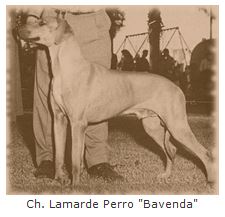
• Kimani of Alicia Mohr, New Jersey
• River Roads of Judith Hupperts
• Kwetu of Barbara Sawyer Brown, Illinois
• Lionpride of the Coopers
• Oakhurst of the Ruperts, California
• Raintree of Beachley and Kathy Main
• Rawhide of Louise Lertora
• Shadyridge of Ulla Britt Ekengren
• Tawnyridge of Kay Fanning
• Rolling's of D. Jay Hyman, Maryland
• Blanbeeridge of Blanche Brophy and Bee Elliot
• Walgroh of Martin and Betty Walsh, Illinois